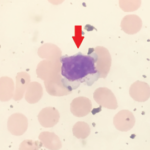(Reuters)—Amgen Inc. and Belgium-based UCB SA said on Monday that their osteoporosis drug met all the primary endpoints by reducing the incidence of new vertebral fracture in postmenopausal women with osteoporosis in a late-stage study.
The topline results, from a Fracture study in postmenopausal women with osteoporosis (FRAME), showed that the drug romosozumab met a secondary endpoint of reducing the incidence of clinical fractures, the companies said.
However, the drug failed to meet another secondary endpoint of reducing the incidence of non-vertebral fractures through months 12 and 24, the companies said.
Amgen said the percentage of patients with adverse events and serious adverse events in the 12- and 24-month study period were balanced.
“These data are encouraging and in meeting the co-primary endpoints of this study, Romosozumab has shown to be effective in reducing the incidence of new vertebral fractures at months 12 and 24 and for clinical fractures as early as 12 months,” UCB’s chief medical officer and executive vice president, Iris Loew-Friedrich, said.
The companies said they plan to discuss the FRAME results with global regulators in anticipation of a potential filing in 2016.
Romosozumab is an investigational bone-forming monoclonal antibody and is not approved by any regulatory authority for the treatment of osteoporosis.


